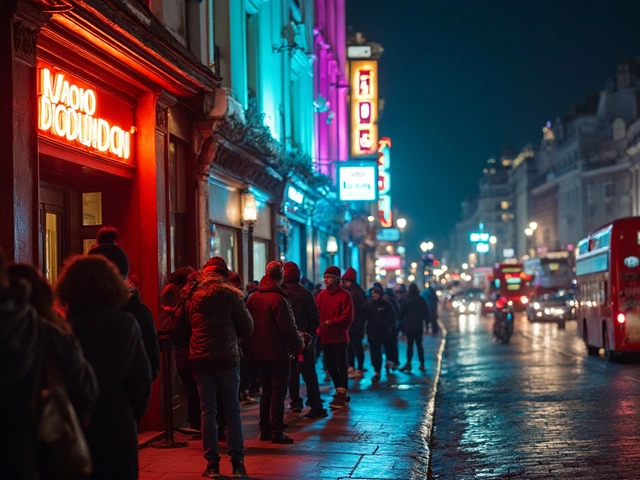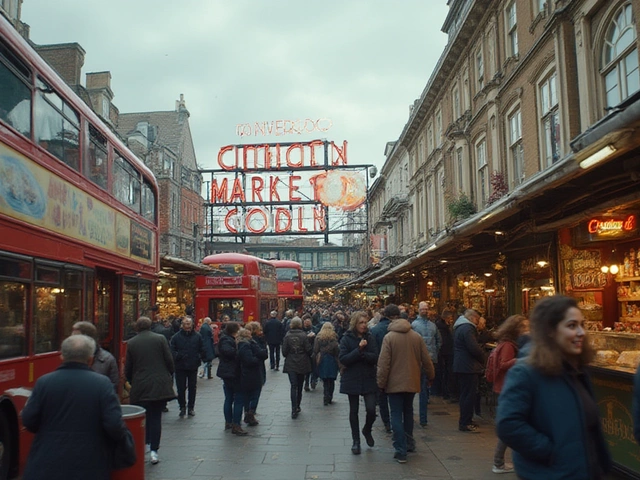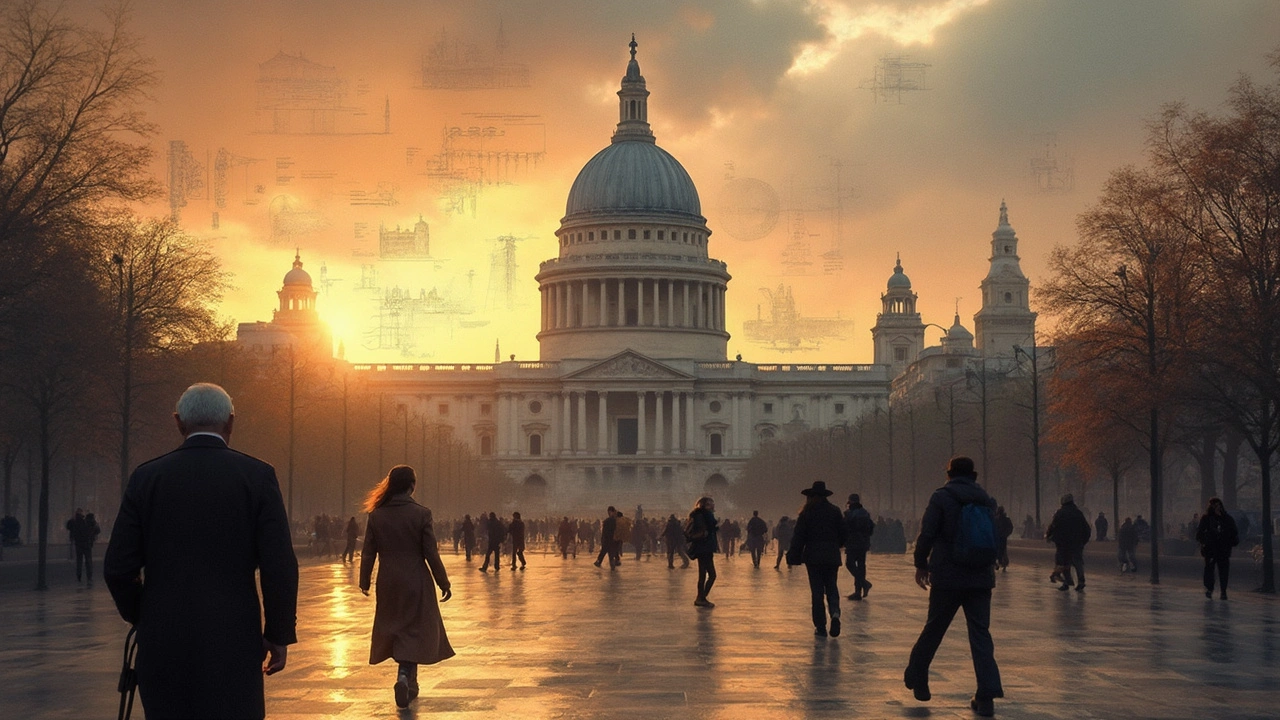
Take a walk through London’s financial district and it’s impossible to miss the huge, elegant dome of St. Paul’s Cathedral rising above the traffic. For most Londoners, it’s just there—part of the skyline you spot from Waterloo Bridge, or in the background of wedding photos in the City. But have you ever thought about what makes it look and feel so different from any other church in the capital?
The secret’s in the innovation. When Sir Christopher Wren got the job after the Great Fire of London in 1666, he took on more than just rebuilding. He wanted to give London something the city had never seen. The blend of bold Baroque flair with clever English engineering gave St. Paul’s that unmistakable look—rounded lines, grand steps, and a dome that makes even the Shard feel like it’s trying too hard.
Living here, you’ve probably heard stories about the crypt, the Whispering Gallery, or how the cathedral somehow survived the Blitz. But you might not know how much London-specific thinking went into every stone and pillar. Wren wasn’t just copying Rome. He was making a building that fit London—one that could handle the storms, the crowd, the smoke, and stubborn city regulations.
- Wren’s Bold Vision in Post-Fire London
- How St. Paul’s Changed London’s Look
- Engineering Genius: Getting That Dome Up There
- From Whispering Gallery to Clockwork: Local Legends
- Tying St. Paul’s to Everyday London Life
Wren’s Bold Vision in Post-Fire London
In 1666, London was a mess. The Great Fire had ripped through the City, flattening over 13,000 homes and almost every church inside the old Roman walls—including the medieval St. Paul’s Cathedral. This was Wren’s moment. He wasn’t just patching things up; he wanted a capital that looked forward, not back.
Wren pitched some wild ideas at first. His original drawing for St. Paul’s looked more like a European palace than an English church—huge domes, grand piazzas, and straight boulevards. London’s city elders, though, weren’t sure about such a massive shift. After several rejections and heated council meetings (imagine a 17th-century planning row), Wren landed on a plan that balanced continental wow-factor with what Londoners would accept.
His final design kept the classic English cross-shaped layout but added something new—a massive dome inspired by St. Peter’s in Rome. The dome wasn’t just for show. At 111 metres high, it made the St. Paul’s Cathedral the tallest building in London from 1710 to 1967. That’s right, it held the crown for over two centuries, well before the BT Tower or the Gherkin.
If you’re curious how St. Paul’s fit into London’s rebuild, check out these local stats from the time:
| Year | No. of Churches Rebuilt | Cost of St. Paul’s Project (£, 1700 equivalent) |
|---|---|---|
| 1666 | 0 | 0 |
| 1670s | 50+ | Unplanned |
| 1710 | 51 (Wren-Designed) | ~750,000 |
Wren didn’t stop at the cathedral. He designed or rebuilt 51 churches around London, setting the whole City up for a new era. You can spot his fingerprints in places like St. Mary-le-Bow and St. Bride’s off Fleet Street. If you’re ever walking through EC4, take a peek inside—they’re all part of the story.
His approach was practical, too. Brick, Portland stone, and a smart, layered design meant the cathedral could take London’s lousy weather and be patched up over the years without fuss. If you talk to City planners or architects today, they’ll tell you Wren’s trick was mixing vision with what really worked on these busy, awkward London streets.
How St. Paul’s Changed London’s Look
Before St. Paul’s Cathedral popped up, London’s skyline was squat, a bit messy, and packed with church towers that all kind of blended into one another. After the 1666 fire, most of the old City of London was rubble, and a lot of folks figured the new cathedral would just end up looking like the previous one—gothic, dark, and a touch gloomy.
But Sir Christopher Wren’s vision was totally different. His design for St. Paul’s introduced big, clear lines and that enormous dome right in the middle of the city. It was the St. Paul’s Cathedral dome that changed everything—at nearly 112 metres, it became the tallest building in London for over 250 years, and you seriously couldn’t miss it from almost anywhere in the city centre.
Wren’s use of the dome wasn’t just for show. He built it to be seen from all angles, which is why so many classic London views, like the one from Parliament Hill or the Millennium Bridge, feature St. Paul’s front and centre. It set a trend for large public buildings in the city—later icons like the Old Bailey and even the Tate Modern took inspiration from its bold, dominant style.
Here’s a quick look at how St. Paul’s changed London’s building style and cityscape:
- The dome broke up the flat skyline, making London instantly recognisable in paintings and on postcards.
- Its grand steps and open west front encouraged the city to build spaces around major landmarks, starting traditions like big public gatherings and memorials (if you’ve ever watched Lord Mayor’s Show or a royal procession, St. Paul’s often features right in the action).
- Wren’s ideas on symmetry and classical shapes led to a wave of ‘Wrenaissance’ churches—over 50 across the city, many still going strong today, like St. Mary-le-Bow and St. James’s Piccadilly.
The dome’s influence went even further in local planning. Up until the 1960s, London planners kept ‘protected views’—meaning no building could block key sightlines to St. Paul’s from spots like Richmond Park and Primrose Hill. Even now, skyscraper projects like the Walkie Talkie and Cheesegrater jump through hoops to make sure that famous dome stays visible.
| Feature | Year Completed | Impact on London |
|---|---|---|
| St. Paul's Dome | 1710 | Tallest building in London until 1963; became major city symbol |
| Surrounding Wrenaissance churches | 1680–1710 | Changed parish skyline; influenced building style across the City |
| First use of protected views | 1938 | Preserved historic sightlines; still impacts planning permissions |
So, if you think London just happened to look this way, it didn’t. St. Paul’s set the tone: big statements up top, spaces for people down below, and a skyline London keeps fighting to protect. Next time you’re grabbing lunch near St. Paul’s Station or cycling over Blackfriars Bridge, look up. That view isn’t just random—it’s planned, protected, and as London as pies at Goddard’s in Greenwich.
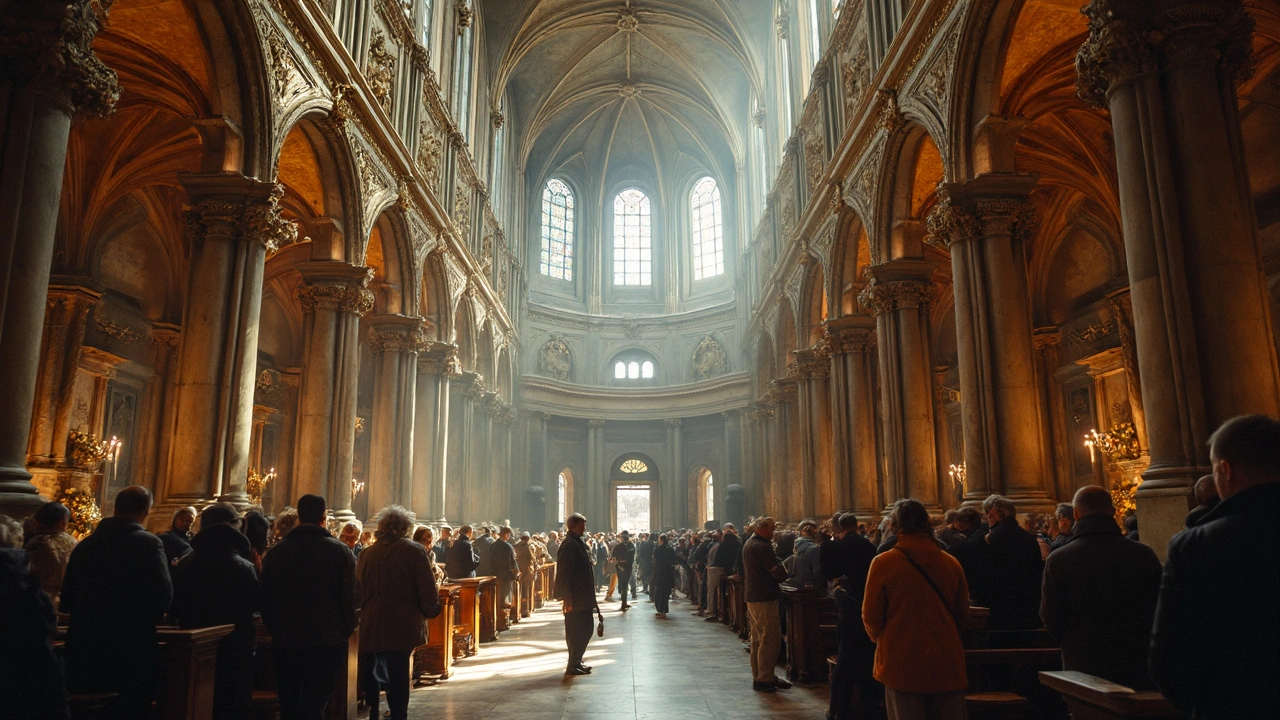
Engineering Genius: Getting That Dome Up There
The big question every Londoner asks when gazing at St. Paul’s Cathedral: how did they manage to keep that massive dome standing for over 300 years, especially in a city where most things lean, wobble, or get knocked about by taxis and red buses?
Here’s the clever bit. Wren didn’t just build one dome. He built three, stacked like a Russian doll. There’s a sturdy brick cone in the middle doing all the heavy lifting, a beautiful outer dome you spot from Millennium Bridge, and a smaller painted dome you see when you step inside. This layered design wasn’t some fad; it was a practical solution to deal with London’s unpredictable weather and the limited building tech of the time.
He also didn’t have the kind of fancy cranes we use on Canary Wharf sites now. Instead, local workers built giant wooden scaffolds, using timber hauled in from as far as Oxfordshire. The materials themselves were a gamble—Portland stone for the outside, chosen because it held up against the city’s smoky air and acid rain, but you’ll spot spots where smog has still left its mark even today.
One of the sneakiest tricks Wren played? He hid iron chains (think giant, old-school bicycle chains) inside the stonework to make sure the dome didn’t burst outwards under its own weight. You’d never see these iron rings touring St. Paul’s, but they’re the reason London still has its iconic curve watching over Fleet Street.
If you want to really see Wren’s masterpiece up close, climb the 528 steps to the top. Half the fun is the view, but along the way you’ll spot thick walls, those endless staircases, and bits of engineering Londoners still brag about in pubs today. The dome is more than a strong roof—it’s the heart of St. Paul’s Cathedral and a massive flex from a bloke who liked to problem-solve.
From Whispering Gallery to Clockwork: Local Legends
If you’ve ever climbed the 259 steps up to the Whispering Gallery, you probably noticed something odd happens with sound. Say a quiet word against the curved wall, and someone on the opposite side can hear it clear as day. It’s not magic—just smart acoustics built into St. Paul’s Cathedral by Wren’s design. Tour guides love showing this off, but the real tip is to visit on a weekday morning when there are fewer school groups. You’re more likely to get a clear shot at whispering and hearing the effect yourself.
The cathedral is full of gadgetry you’d never expect, especially if you’re into clockwork. St. Paul’s great clock, tucked in the west tower, was made by Langley Bradley in 1709. It strikes the hour with a massive blow, and legend has it workers all along Ludgate Hill set their watches by it before smartphones took over. This isn’t just folklore—the clock really is still hand-wound every week. If you’re on a guided Tower Tour, you might get a sneak peek at the mechanism and the ancient graffiti from clockmakers dating back three centuries.
You’ll also catch locals chatting about St. Paul’s surviving the Blitz. The myth goes that Londoners camped out on the dome during bombing raids, but what really happened was “St. Paul’s Watch”—volunteers who actually did spend nights on the roof to douse incendiary bombs. A whole network of local people, from off-duty bus drivers to retired servicemen, kept the dome standing. Some of their names are still recorded in the crypt.
Some St. Paul’s trivia Londoners love:
- The Whispering Gallery is 30 metres above the cathedral floor—great for a view but even better for eavesdropping on secrets.
- The bells weigh more than five typical London double-decker buses put together.
- Princess Diana and Prince Charles got married here, watched on TV by over 750 million people worldwide.
Quick reference for some famous St. Paul’s legends:
| Legend/Feature | Fact |
|---|---|
| Whispering Gallery | Acoustics let whispers travel over 34 metres |
| Clockwork | Main bell, Great Tom, weighs about 6 tons |
| Blitz Survival | St. Paul’s Watch saved the building several times |
| Famous Weddings | Lady Diana and Prince Charles, 1981 |
If you’re after a bit of local legend mixed with some real engineering, this is the bit of the cathedral you’ll want to linger at. Check for special tours during Open House London or even drop by during lunchtime—sometimes you’ll catch a verger with a good story or two.
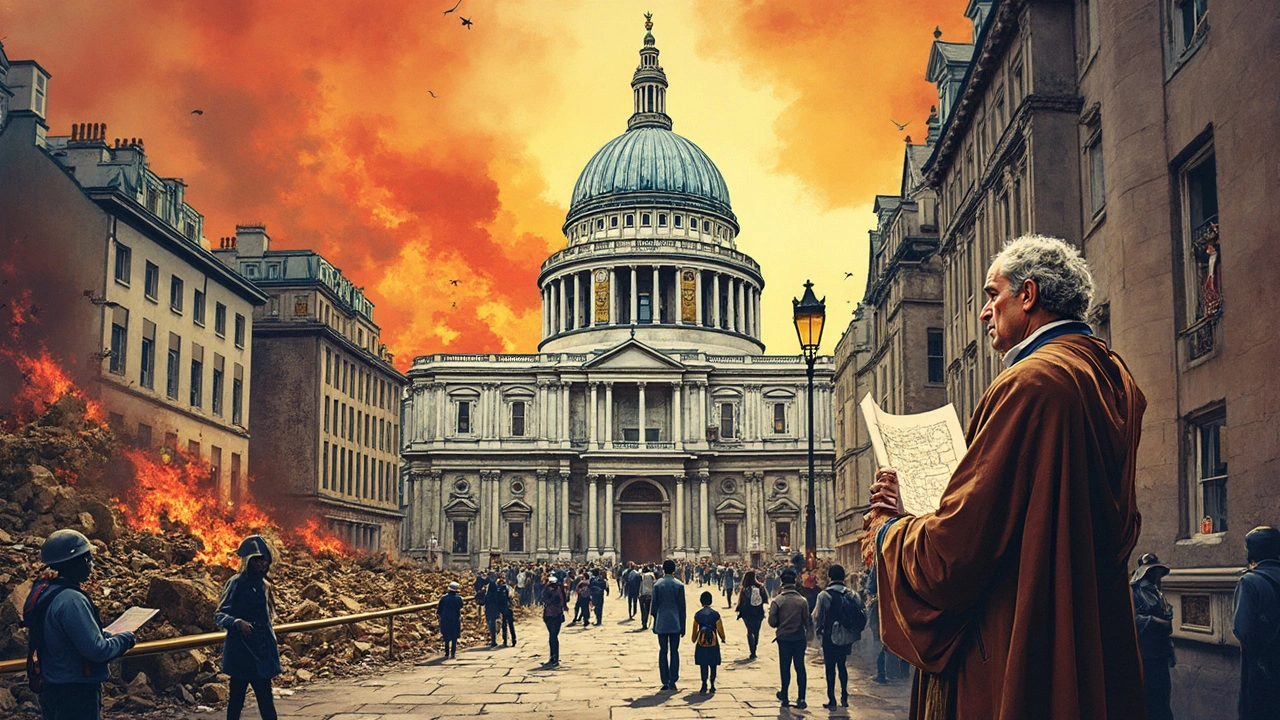
Tying St. Paul’s to Everyday London Life
It’s easy to think of St. Paul’s Cathedral as just a tourist stop, but for people living in London, it weaves into city life in some pretty unexpected ways. The dome pops up in commutes, TV news shots on BBC, and even on logos for local businesses. Loads of Londoners have been inside because of work events, concerts, or the Lord Mayor’s Show, which literally passes right by its famous steps every November.
Events at St. Paul’s are a regular part of the city’s rhythm—whether it’s a big memorial, a quirky charity abseil, or when the bells ring out for royal celebrations. It hosts more than 1.5 million visitors each year, not just tourists but folks from every borough who come for graduation ceremonies, remembrance services, or just to have a walk around its gardens on a lunch break.
As the Dean of St. Paul’s, the Very Reverend Andrew Tremlett, recently summed it up:
"St. Paul’s isn’t just a religious symbol—it’s a meeting point for all Londoners, where the city’s joys and sorrows are shared."
It’s a spot where you can catch a free lunchtime organ recital, join the regular morning service, or check out the London Symphony Orchestra doing their Christmas thing. Students at City University even study the building’s acoustics as part of their engineering degrees, all right here in the heart of the Square Mile.
Here are some practical ways St. Paul’s is part of local routines:
- Grab a quick Pret or Leon and eat lunch on the cathedral’s steps—classic City worker move.
- Try the “Whispering Gallery” challenge on a rainy Sunday: it’s genuinely fun and about £20 to get in (discounts for locals with proof of address).
- If you need peace, the gardens are quieter than most of the nearby public squares, especially after 3pm.
- Follow the annual Lord Mayor’s Show for a parade and fantastic people-watching, starting right outside St. Paul’s.
If you’re curious about numbers, here’s a snapshot of how St. Paul’s fits into modern London:
| Fact | Stat |
|---|---|
| Annual visitors | 1.5 million+ |
| Annual events | Nearly 300 |
| Boroughs represented in events | All 32 |
| Daily step-count (City workers using St. Paul’s steps) | Est. 10,000+ |
So next time you cut through Paternoster Square or hop off at the St. Paul’s tube, look up and remember: this isn’t just a historic site, it’s a proper part of how the city feels every day.


